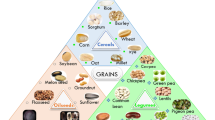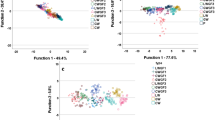Abstract
In this research, the effects of a low mixing temperature on dough rheology and the quality of bread were investigated. In the experiments, strong flour samples (Type 550), 1.5% salt, 3% of yeast and 1% additive mixture were used and dough samples were mixed at 17 °C (low temperature), 23 °C (control) and 30 °C (high temperature). Five different periods (0, 30, 60, 90 and 120 min) were applied at the bulk fermentation stage. At the final proofing stage, the dough was fermented until it reached a constant height. It was determined that almost every bread from dough samples mixed at 17 °C resulted in not only the highest bread volume and bread weight, but also the best texture, elasticity and crumb structure. The results of dough samples mixed at 23 °C were worse than those of dough samples mixed at 17 °C. The worst results were obtained from dough samples mixed at 30 °C (high temperature). As a result, it may be concluded that the quality of bread from dough samples mixed at low temperature (17 °C) is superior to those from dough samples mixed at the higher temperatures. Besides these findings, it may also be stated that prolonging the period of bulk fermentation in dough samples mixed at 17 °C positively develops baking performances.


Similar content being viewed by others
References
Collado M, Leyn ID (2000) Cereal Foods World 45:214–218
Naeem HA Darvey NL Gras PW MacRitchie F (2002) Cereal Chem 79:332–339
Pyler EJ (1988) Baking Science, Technology Vol II. Sosl, Kansas p625–659
Li A, Walker CE (1992) Cereal Chem 69:681–683
International Association for Cereal Chem (1962) Standard No. 110
International Association for Cereal Chem (1962) ICC Standard No. 104
International Association for Cereal Chem (1962) ICC Standard No. 105
International Association for Cereal Chem (1962) ICC Standard No. 106
International Association for Cereal Chem (1962) ICC Standard No. 116
International Association for Cereal Chem (1962) ICC Standard No. 107
International Association for Cereal Chem (1962) ICC Standard No. 115
Bloksma AH (1971) Rheology, chemistry of dough in wheat chemistry, technology. American Association of Cereal Chemists, St Paul, Minnesota
International Association for Cereal Chem (1962) ICC Standard No. 114
Pelshenke PF, Boilling H, Hampel G, Kempw W, Manger A, Rotsch A, Schulb S, Spincher G, Tegge G (1964) Standard Methoden für Getraide Mehlund Brot 4. AnflageI Verlag Meritz Scheafer, Detmold pp 159
Skeggs PK (1985) Cereal Chem 62:458–462
Dong H, Sears RG, Cox TS, Hoseney RC, Lookhart GL, Shogren MD (1992) Cereal Chem 69:132–136
Autio K, Flander L, Kinnunen A, Heinonen R (2001) Cereal Chem 78:654–657
Bloksma AH (1990) Cereal Foods World 35:237–242
Campos DT, Steffe JF, NG PKW (1997) Cereal Chem 74:489–494
Okada K, Negishi Y, Nagao S (1987) Cereal Chem 64:428–434
Zheng H, Morgenstern MP, Campanella OH, Larsen NG (2000) J Cereal Sci 32:293–306
Parades-Lopez O, Bushuk W (1983) Cereal Chem 60:19–23
He H, Hoseney RC (1992) Cereal Chem 69:1–6
Walker CE, Hazelton JL (1996) Cereal Foods World 41:23–28
Stöllman U, Lundgren B (1987) Cereal Chem 64:230–236
El-Dash AA (1978) Cereal Chem 55:436–446
Author information
Authors and Affiliations
Corresponding author
Rights and permissions
About this article
Cite this article
Başaran, A., Göçmen, D. The effects of low mixing temperature on dough rheology and bread properties. Eur Food Res Technol 217, 138–142 (2003). https://doi.org/10.1007/s00217-003-0717-0
Received:
Revised:
Published:
Issue Date:
DOI: https://doi.org/10.1007/s00217-003-0717-0




